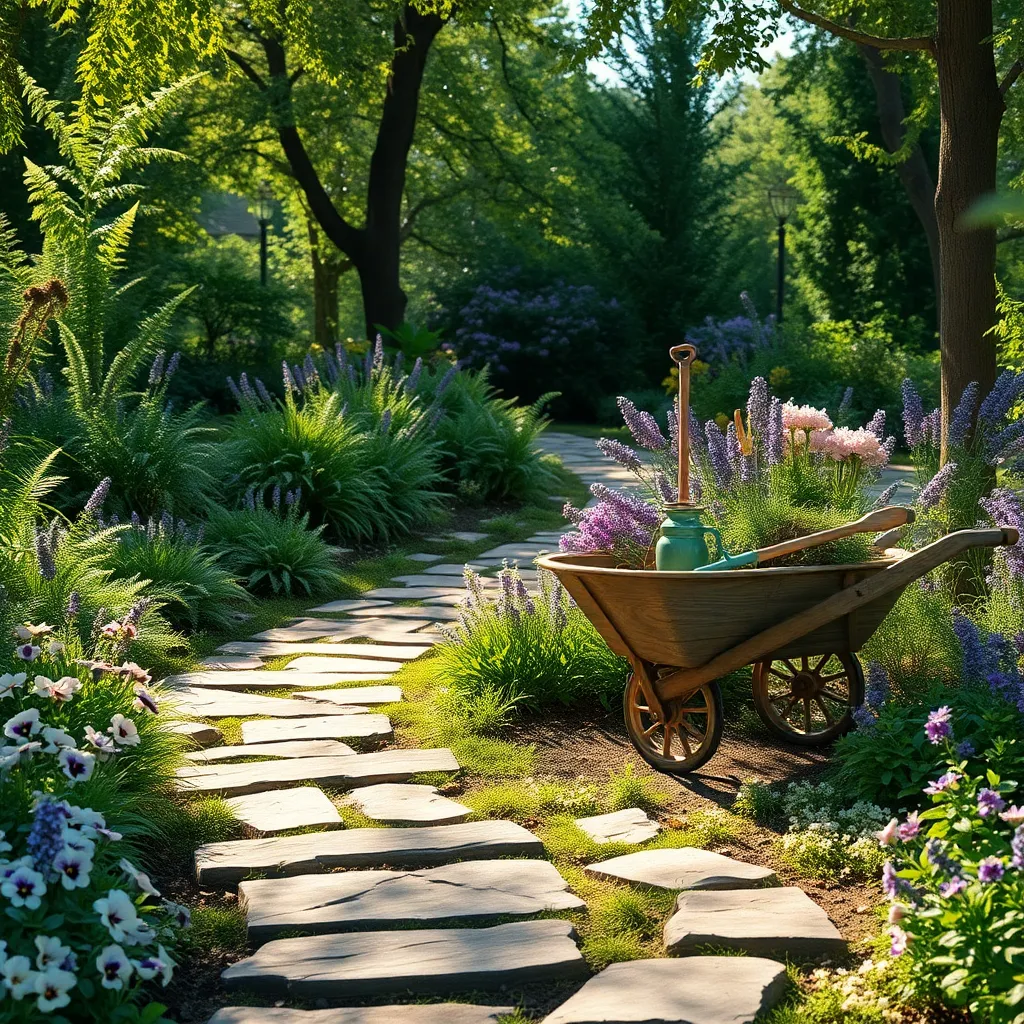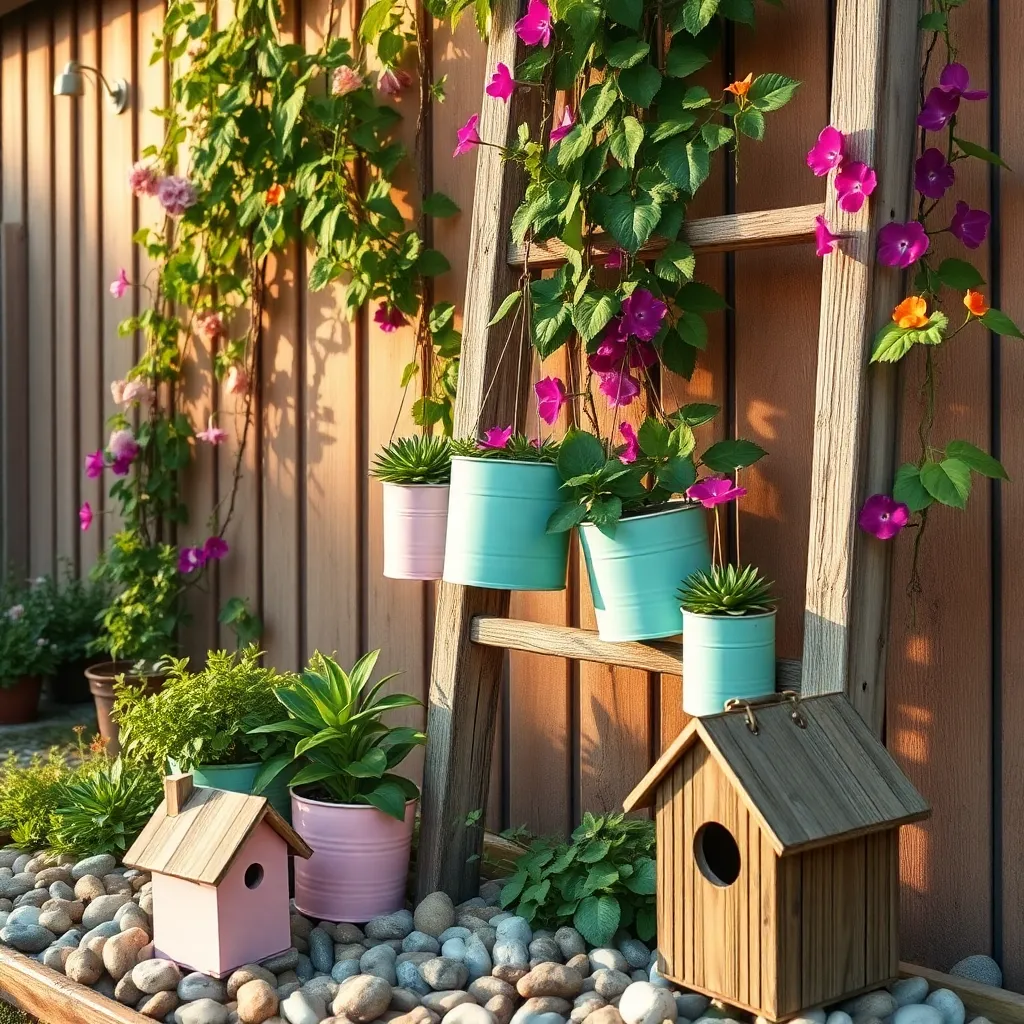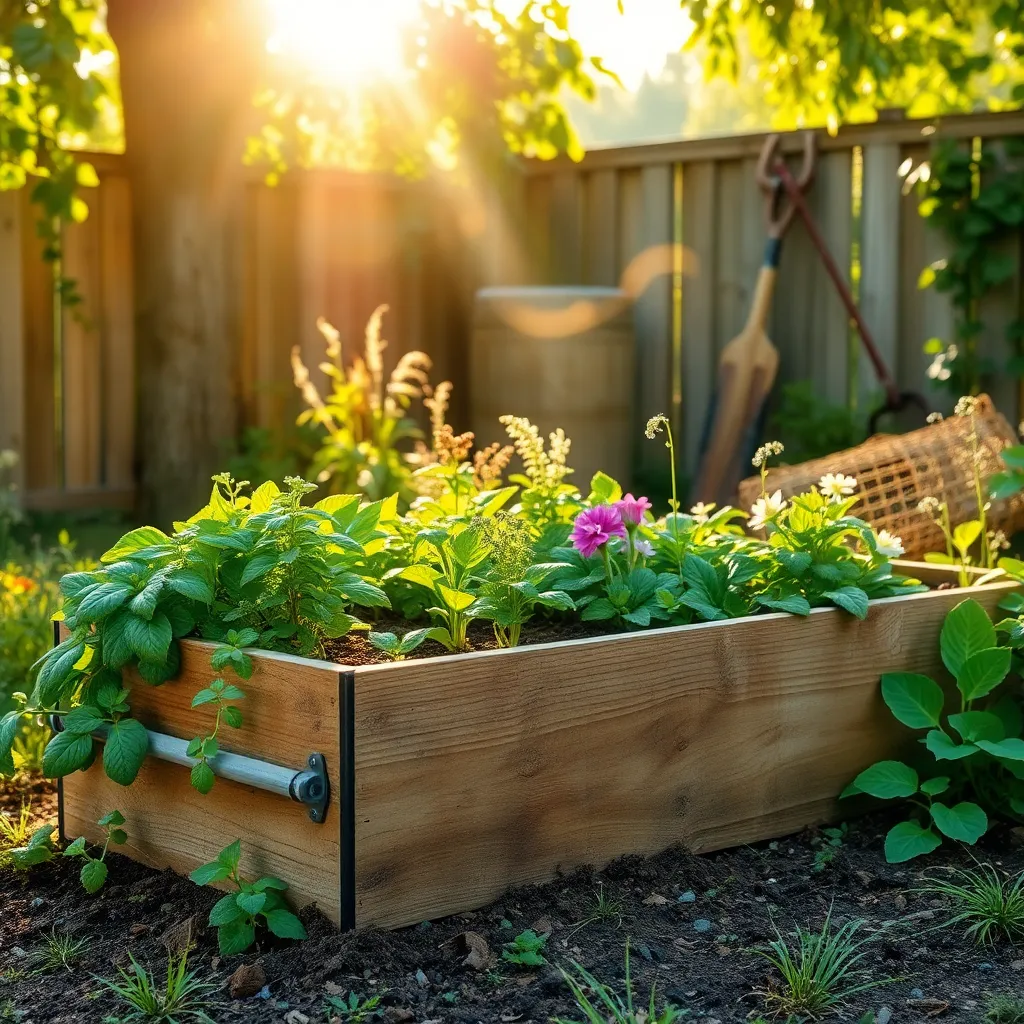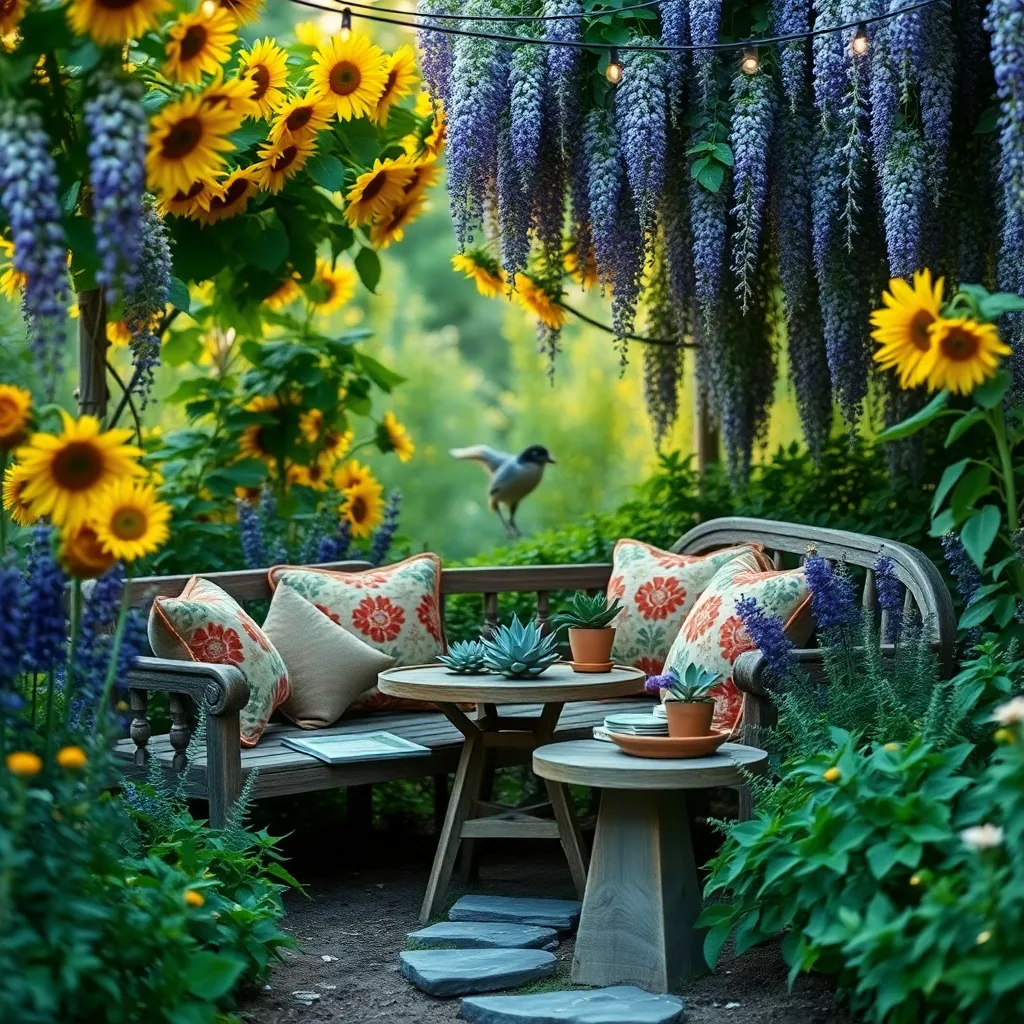Gardening is more than just a pastime; it’s a way to transform your outdoor space into a personalized sanctuary that reflects your creativity and care. Whether you’re just planting your first seeds or you’ve been coaxing blooms from the soil for years, embarking on DIY garden projects can add a new layer of joy and satisfaction to your green journey. Crafting a garden that truly speaks to your style and needs allows you to engage with the natural world in a deeply fulfilling way.
In this article, we invite you to explore a variety of DIY outdoor garden projects that will inspire and challenge you, regardless of your experience level. From building your own raised beds to creating whimsical garden art, you’ll find projects that not only beautify your space but also enhance its functionality. Each project is designed to be approachable and rewarding, offering clear steps and tips to ensure your success.
You’ll discover the joy of repurposing everyday items into unique garden features that spark conversations and admiration. Learn how to maximize small spaces with vertical gardening techniques or craft a cozy nook with handmade furniture. By the end of this article, you’ll be equipped with the knowledge and inspiration to transform your garden into a reflection of your unique vision, all while nurturing your love for the outdoors.
Creating Charming Garden Pathways

Garden pathways add both functionality and charm to your outdoor space, creating a guide through your floral and foliage displays. To begin, choose a path style that complements your garden’s theme, whether it’s rustic, formal, or whimsical.
Selecting the right materials for your pathway is crucial—consider options like gravel, stepping stones, or bricks, each offering a different aesthetic and maintenance level. Gravel is great for a quick and easy path, but it requires regular raking to keep it neat, while bricks provide a more durable, low-maintenance option.
When planning your pathway, take into account the surrounding plants and their needs. If you have delicate plants nearby, ensure the path is wide enough to prevent accidental trampling, and consider using a mulch border to protect roots and retain moisture.
For a professional touch, add edging along your pathways to keep materials in place and define the space. You can use plastic edging for a subtle look or stone for a more pronounced border, both of which help prevent soil erosion and maintain the path shape over time.
Advanced gardeners might incorporate lighting along their paths to enhance both safety and ambiance. Solar-powered lights are an eco-friendly choice and can be easily installed along the edges, offering a gentle glow that highlights your garden’s beauty even at night.
Upcycling Materials for Garden Decor

Transforming everyday items into garden decor is an excellent way to add personality to your outdoor space while being environmentally conscious. Look around your home for items that can be repurposed, such as old tires, wooden pallets, or glass bottles, and envision how they might serve as plant holders or artistic accents.
Consider using old tires to create colorful planters or small garden ponds that can house water-loving plants. Simply paint the tires with weather-resistant paint, stack them creatively, and fill them with a mix of soil appropriate for your chosen plants, like a blend of loam and peat moss for good drainage.
Wooden pallets can be transformed into vertical gardens perfect for small spaces, offering both functionality and charm. Secure the pallets against a wall or fence, line them with landscape fabric to hold soil, and plant herbs or flowers that thrive in vertical arrangements, such as strawberries or succulents.
Glass bottles can be used to create eye-catching borders or path edges, reflecting sunlight and adding a touch of sparkle to your garden. Bury the bottles neck-down into the soil to keep them stable, and ensure you leave enough space between them to accommodate the growth of border plants such as lavender or marigolds.
Building Raised Garden Beds

Raised garden beds are an excellent way to improve soil drainage and create a more controlled growing environment. They offer the flexibility to garden in areas with poor soil and can be built to suit any space, making them a perfect project for both beginners and experienced gardeners.
To start building your raised garden bed, choose a sunny location that receives at least six hours of sunlight daily. Most vegetables and flowers thrive in these conditions, allowing you to maximize growth and yield.
When constructing your raised bed, opt for durable materials such as untreated cedar or recycled composite wood. These materials resist rot and pests, ensuring that your garden bed lasts for many seasons without the need for frequent repairs.
Fill your raised bed with a high-quality soil mix, combining equal parts of garden soil, compost, and coarse sand. This mixture provides optimal drainage and nutrient availability, key factors in promoting healthy plant growth.
Watering is crucial in raised garden beds due to their excellent drainage. Generally, you should water deeply once or twice a week, depending on rainfall and temperature, ensuring the soil remains consistently moist but not waterlogged.
For those looking to enhance their gardening skills, consider incorporating a drip irrigation system. This advanced technique allows you to conserve water while providing consistent moisture directly to the plant roots, which is particularly beneficial in arid climates or during dry spells.
Crafting DIY Vertical Planters

Creating DIY vertical planters can transform small outdoor spaces into lush, green havens. To start, choose a sturdy frame like a wooden pallet or a metal grid that can support the weight of soil and plants.
In vertical planters, it’s crucial to use a lightweight potting mix that retains moisture but drains well. Adding perlite or vermiculite to your mix can help achieve the right balance of moisture retention and drainage.
Consider planting a mix of herbs and trailing plants for an aesthetically pleasing and functional garden. Herbs like basil and mint thrive in vertical arrangements, while trailing plants such as ivy or nasturtiums add visual interest as they cascade down the structure.
Regular watering is essential since vertical planters tend to dry out faster than traditional gardens. Aim to water your plants in the morning to reduce evaporation and ensure the soil remains moist throughout the day.
For advanced gardeners, incorporating a drip irrigation system can automate and optimize watering. This approach not only saves time but also ensures consistent moisture levels, which is crucial for the health of your vertical garden.
Designing Cozy Outdoor Seating Areas

Creating a cozy outdoor seating area starts with choosing the right location in your garden. Look for spots that offer a balance of sun and shade, as this will provide comfort throughout the day.
Begin by selecting furniture that suits both your style and the site’s requirements. Opt for weather-resistant materials like teak or aluminum to ensure durability and longevity.
Accessorizing with cushions and throws can instantly add warmth and comfort to your seating area. Choose fabrics that are both stylish and designed to withstand the elements, such as acrylic or outdoor polyester.
Incorporating plants around your seating area can enhance the cozy atmosphere. Consider low-maintenance perennials or aromatic herbs like lavender and rosemary that thrive in various conditions and add delightful scents.
Lighting is key to extending the usability of your outdoor space into the evening. Solar-powered lanterns or string lights are easy to install and provide an inviting glow without increasing your electricity bill.
For an advanced touch, install a small water feature nearby to create a soothing soundscape. A simple fountain or pond can attract beneficial wildlife while adding a sense of tranquility to your garden retreat.
Conclusion: Growing Success with These Plants
In wrapping up ‘DIY Outdoor Garden Projects You’ll Love,’ we uncovered five essential relationship concepts: the importance of shared activities, the power of communication, the joy of creating together, the value of nurturing growth, and the impact of celebrating achievements. These ideas not only enhance your outdoor spaces but also strengthen the bonds with those you love.
As an immediate next step, choose one project from the article and plan a day with your partner, friends, or family to start this journey together. This shared experience will not only beautify your garden but also cultivate deeper connections.
Make sure to bookmark or save this article so you can easily revisit these concepts and projects whenever you need a fresh dose of inspiration or relationship enrichment. Remember, every seed you plant in your garden and in your relationships can bloom into something truly extraordinary.
Looking ahead, by incorporating these projects into your routine, you’re not just crafting a beautiful garden—you’re also laying the foundation for a thriving, resilient relationship. Embrace the journey; your relationship’s potential is as boundless as the blooms you nurture.

